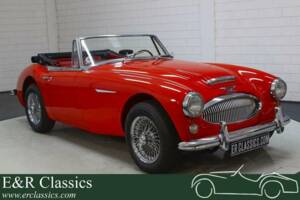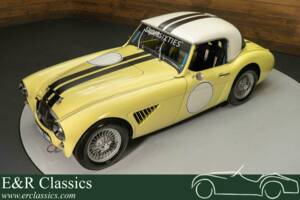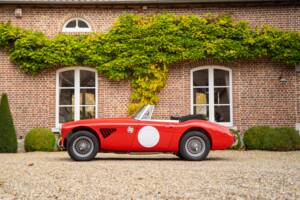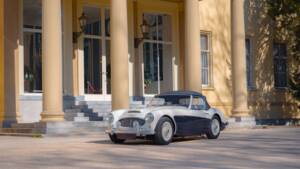- Car
- Austin-Healey (115 offers)
Austin-Healey classic cars for sale
Austin-Healey cars represent the essence of British sports motoring, blending robust engineering with purist design. From the powerful 3000 to the lively Sprite, each model strikes a balance between performance, distinctive character, and mechanical simplicity. Discover which Austin-Healey model fits your collection.
Search results
1960 | Austin-Healey 3000 Mk I (BN7)
LHD, Getrag 5-speed, valuation report
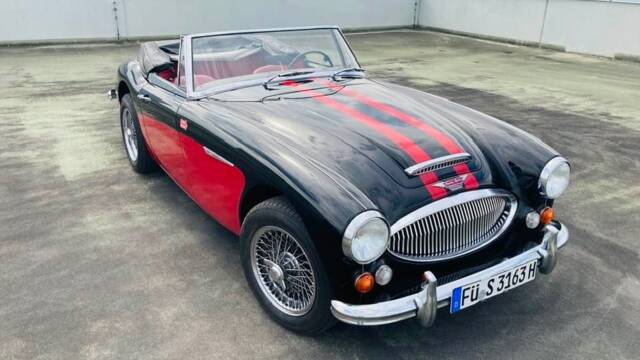
1967 | Austin-Healey 3000 Mk III (BJ8)
**Restauriert**Foliert**Deutsch H Zulassung**
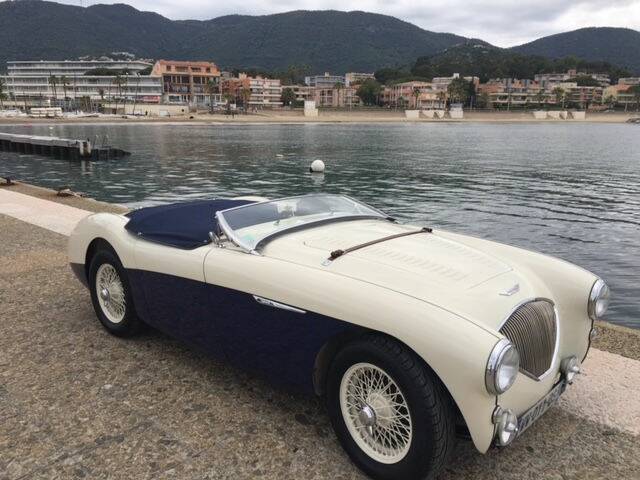
1956 | Austin-Healey 100/4 (BN2)
Austin Healey 100/4 BN2 | 1956 | Route 66 Auctions - For sale by auction. Estimate 43500 EUR
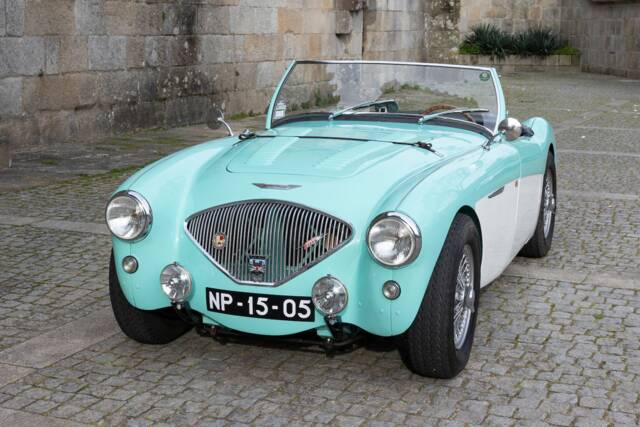
1955 | Austin-Healey 100/4 (BN1)
Austin-Healey 100 BN2 100M | 1955 | Route 66 Auctions - For sale by auction. Estimate 59500 EUR
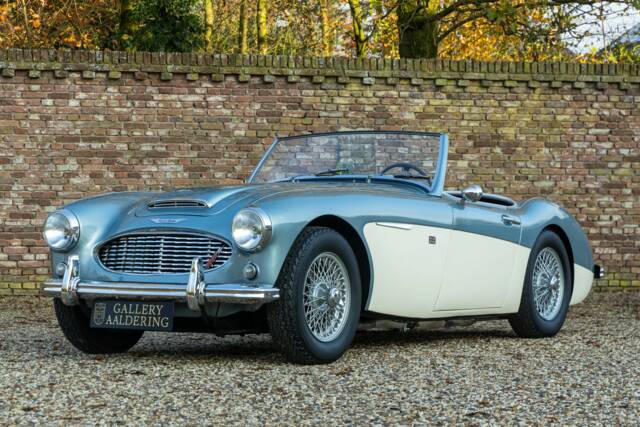
1960 | Austin-Healey 3000 Mk I (BN7)
Austin Healey 3000 MKI Overdrive BN7 "Two seater" Two-seater BN7 in much-appreciated color scheme “Ice Blue over Old English White”, The condition can be described as an older restoration (1990s) and in good driving order, Factory optional extra's: Heater - Eelctrically operated overdrive - Wire spoke 'knock on' wheels, "New power-plus performance and aerodynamic lines" A two-fold triumph for Austin Healey,
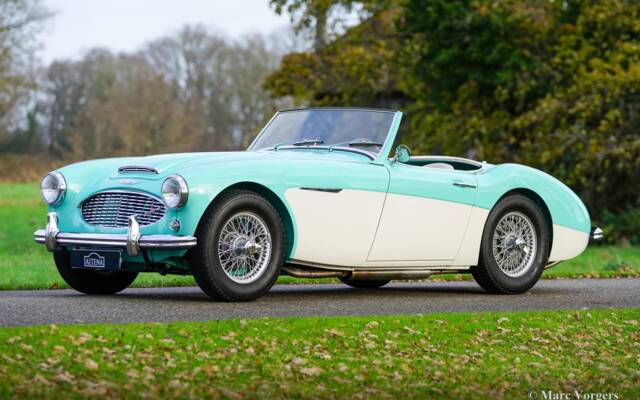

1966 | Austin-Healey 3000 Mk III (BJ8)
Austin Healey

1959 | Austin-Healey 3000 Mk II (BN7)
Austin Healey

1964 | Austin-Healey 3000 Mk III (BJ8)
Austin Healey
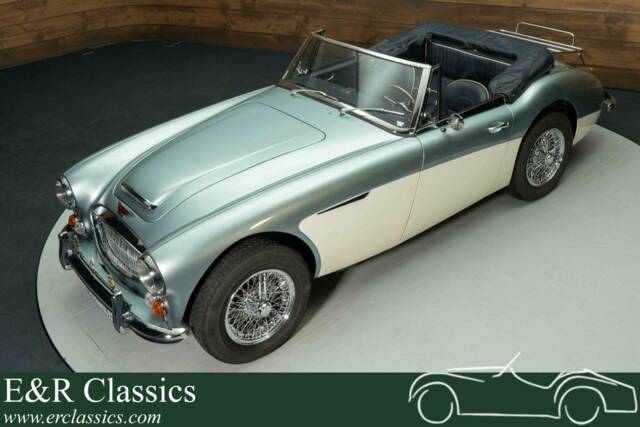
1966 | Austin-Healey 3000 Mk III (BJ8)
Austin-Healey 3000

1967 | Austin-Healey 3000 Mk III (BJ8)
Concours condition!
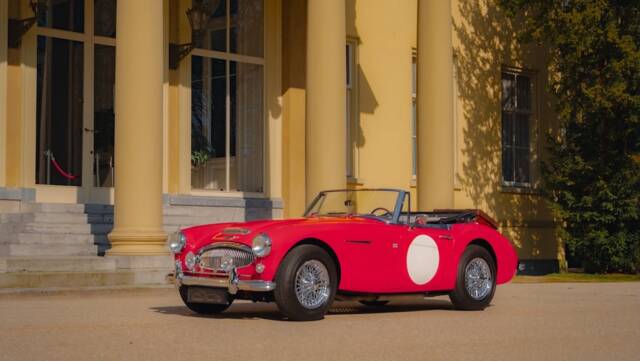
1965 | Austin-Healey 3000 Mk III (BJ8)
Austin Healey 3000 MK III BJ8

1965 | Austin-Healey 3000 Mk III (BJ8)
Austin-Healey 3000 Mk III
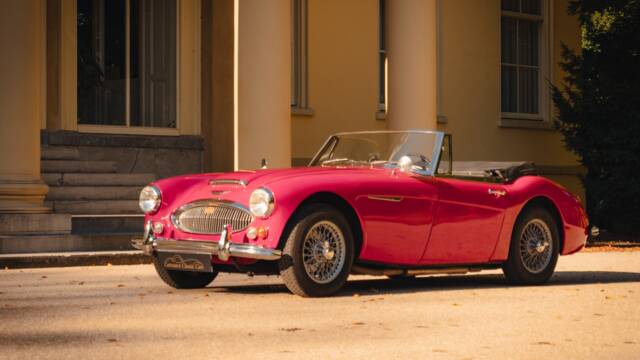
1966 | Austin-Healey 3000 Mk III (BJ8)
1966 | Austin-Healey 3000 Mk III (BJ8)

1957 | Austin-Healey 100/6 (BN4)
Austin Healey 100-6
History of Austin-Healey
Austin-Healey emerged from a collaboration in 1952 between the Austin division of British Motor Corporation and the Donald Healey Motor Company, an acclaimed sporting car firm. Donald Healey, a successful rally driver and engineer, initially presented his Healey 100 at the 1952 London Motor Show, garnering immense interest from both sides of the Atlantic. BMC quickly secured the rights and introduced the Austin-Healey 100 in 1953. Over the next two decades, Austin-Healey developed a range of sports cars that would leave their mark in both motorsports and British cultural history. Production ceased in 1971 after Leyland Motors absorbed BMC, bringing an end to this celebrated marque.
Model History
The Austin-Healey range began with the 100 (1953–1956), a straightforward four-cylinder sports roadster. This was followed in 1956 by the 100/6, featuring a six-cylinder engine for improved performance and refinement. The 3000 series arrived in 1959, boasting a 2.9-litre six-cylinder, delivering greater power and elevated drivability. Each 3000 variant, marked as MkI, MkII or MkIII, incorporated incremental enhancements—from brakes to carburation and interior luxury. In parallel, the compact Sprite series (1958–1971) offered affordable, featherlight open-top driving, made famous by its unique ‘Frogeye’ or ‘Bugeye’ headlights and minimalistic build. The Sprite was often a gateway for club racers and remains a cult favourite. Production of the flagship 3000 ended in 1967, with the Sprite continuing until 1971.
Highlights and Numbers
Austin-Healey cars are admired for their blend of mechanical honesty and driver involvement: low-slung seating, elongated bonnets, and direct, communicative controls. Early models like the 100/4 are revered for their rugged simplicity and healthy power-to-weight ratio. The six-cylinder ‘Big Healeys’ (100/6 and 3000 series) are known for their robust torque and motorsport pedigree. Features such as removable side screens, wire wheels, hardtop options, and aftermarket performance upgrades make them highly customisable. The Sprite stands out for its lightweight chassis and quirky appearance. Period colour options included Healey Blue, Old English White, British Racing Green, and numerous attractive two-tone schemes.
Technical Data
Special Editions and Collectible Models
Particular attention is afforded to models such as the Austin-Healey 100M ‘Le Mans’—factory or dealer-modified with upgraded camshafts, alloy bonnets, and improved carburation for motorsport use. The ultra-rare 100S was constructed with lightweight aluminium bodies and competition in mind. Sprite enthusiasts value the Sebring and tuned variants, while the 3000 MkIII BJ8 Phase II is sought after for its blend of improved performance, ride height, interior refinement (wood dash, wind-up windows), and potent 150 hp engine. Collectors pay close interest to cars with factory Heritage certificates and original ‘matching numbers’. Many have eligible status for historic motoring events such as the Mille Miglia.
Engine, Transmission, and Driving Experience
Each Austin-Healey delivers a spirited driving feel, defined by torquey engines and a communicative, unfiltered chassis. The 100/4 propels to 100 km/h in under 11 seconds, feeling lively thanks to low weight and a robust powerband. The 3000 MkIII BJ8, with a more muscular 2.9-litre six and improved rear suspension, pushes to 100 km/h in roughly 11 seconds as well, topping out at 180–195 km/h depending on specification. Gearboxes evolved from basic 3-speeds to more refined 4-speeds with overdrive; brakes moved from drums to upfront discs on later models. Sprites, with their featherweight build and modest 4-cylinder engines, offer agile, tossable handling—appealing for tight B-roads and club events. - Austin-Healey 100 BN1/BN2: 2.6-litre four-cylinder, approx. 90 hp, classic open body.
- Austin-Healey 100/6 BN4/BN6: 2.6-litre six-cylinder, up to 117 hp, 2+2 seating.
- Austin-Healey 3000 MkI–III: 2.9-litre six-cylinder, up to 150 hp, available in both 2-seater and 2+2 forms, improved brakes and interiors as series progressed.
- Sprite (‘Frogeye/Bugeye’): 4-cylinder A-series, featherweight, playful character.
Design, Interior, and Unique Features
Austin-Healey design is immediately recognisable: pronounced front wings, long bonnets, and a lithe, lowered stance. Many feature wire wheels—painted or chromed. The Sprite’s one-piece forward-hinged front and eye-catching ‘Frogeye’ lights are distinctive. Hardtops, tonneau covers, rally tripmasters, and custom steering wheels (Motolita or Derrington) are period-correct options. Interiors boast leather-trimmed seats, white piping, traditional Smiths instrumentation and, on MkIII 3000s, a wood-veneered dashboard. Finishes such as Healey Blue, British Racing Green, and two-tone options are prized. Grab handles, chrome embellishment, and even factory-fitted tool rolls round out the authentic experience.
Other Noteworthy Features
Most Austin-Healeys were assembled with bodies made by Jensen Motors and final assembly at BMC’s Abingdon works. A high proportion were exported to North America, and many have now found their way back to Europe—they frequently possess British Motor Industry Heritage Trust certification. Both restoration and parts supply are well supported through vibrant owners’ clubs and a strong aftermarket.
Summary
Austin-Healey models offer a blend of mechanical honesty, characterful styling and motorsport heritage. Enthusiasts have a choice from the direct and pure early 100s, the muscular and sophisticated Big Healeys, to the playful and minimalist Sprite. With robust aftermarket, excellent club communities and clear technical differentiation between models, the Austin-Healey remains a staple of classic British car culture.






